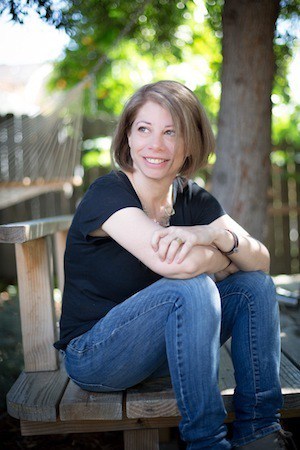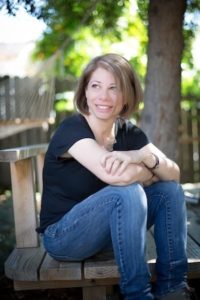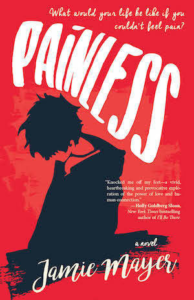Jamie Mayer on Screenplay vs Book, the Garden State and the Power of Pain
Since David was a screenwriter for many years, he’s fascinated by the difference between writing for the screen and writing for between the covers. He’s also quite fascinated by pain, how we use it, how we avoid it, and what we can learn from it. So when he came across Jamie Mayer’s wonderful new novel Painless, we decided to pick her brain about books, screenplays, and pain. Which all seem oddly related somehow.
Read this interview on the HuffPost.
Jamie Mayer: I think some of the books that make the biggest impression are the ones that help you learn about things you really want to know but no one is telling you, so stuff like sex (Judy Blume, my parents’ old hippy-ish copy of The Joy of Sex), magic (Half Magic, Dragonsong), or the mysteries of older, cooler kids (The Outsiders, Judy Blume again – my friends and I had a well marked-up copy of Forever, her “adultiest” one).
I also loved stories about kids who did things they weren’t supposed to be able to do, like living in a museum (From the Mixed-Up Files of Mrs. Basil E. Frankweiler), or solving mysteries (Harriet the Spy, Encyclopedia Brown).
TBD: How did you learn to be a writer?
JM: I always wrote short stories for myself, but never really considered writing as a career. In college I studied film, photography and documentary film. I later decided that if I wanted to direct films, no one would let me unless I also wrote them, so I started writing screenplays – and then it turned into my primary career.
TBD: What was the inspiration for Painless?
JM: I read a newspaper story about a young boy with the same disorder as Quinn, the main character in Painless. It’s a neurological condition where you literally can’t feel pain, and his parents were beside themselves trying to live with this kid who had no natural fear of pain and thought nothing of doing things that would hurt himself or others. And I wondered what living like this would do psychologically to this boy as he grew older – if he grew older, because lots of people with this condition don’t survive to adulthood.
TBD: Why did you choose to write a Young Adult novel?
JM: The story of Painless originally took the form of a screenplay, one of the first I ever wrote. I came close to directing it as a film, but when that fell apart, I put it in a drawer and tried to forget about it – but the story still wasn’t done with me somehow. My mentor Holly Goldberg Sloan, the screenwriter/director-turned-best-selling YA author, suggested I try writing it as a YA novel. And that idea just breathed new energy into it – as I expanded and developed it into novel form it took on a whole new life!
TBD: We live in New Jersey, and we wonder what it was like for you growing up in the Garden State?
JM: I always like to stick up for New Jersey, which is really such a beautiful place but gets a bad rap!
My parents lived in New York City before I was born, but when I was still a baby they hit the suburbs of central New Jersey. It was a great place to grow up, just an hour’s train ride from New York – and we visited often to see family, go to museums or theater, etc. – but it really was this smallish town, where kids wandered freely, disappearing into the woods to play and collect tadpoles or whatever for hours without grownup supervision. At the time I thought it was a little boring, but in retrospect, it was pretty awesome. Plus Jersey corn and tomatoes. Plus Springsteen. Plus Jon Stewart. Come on.
TBD: Why did you pick someone who can’t feel physical pain to be your book’s hero?
JM: There are upsides to feeling no pain, but obviously there are downsides too. Around the time I wrote the original story, I was dealing with the long illness and death of my father (who was a wonderful guy, by the way, nothing like Quinn’s dad!). And like anyone who’s experienced the death of a loved one, or a terrible romantic breakup or even unrequited love, I thought to myself, “Wow, this feels horrible. Maybe if I just never care this much about anyone ever again, I’ll never feel this bad again!” Of course, that’s a terrible idea if you want to be even remotely human – if you want to feel the good stuff, you’ll also be vulnerable to feeling the bad. So this physical condition struck me as a perfect metaphor for how people sometimes close themselves off from connection and love, becoming emotionally “painless”. And I wanted to write a story about someone who comes to realize that to make life worth living, he has to open that door a crack.
TBD: How does your process for writing a novel differ from writing a screenplay?
JM: Screenplays are so much about structure and clear character arcs – which are also really useful in writing a novel. But where screenwriting style is usually very spare and external, only describing what you can see, a novel can be more descriptive and internal, so I needed to consciously remind myself to widen the palette, and that was really fun and liberating! Also, in a screenplay you don’t have to choose between first and third (or second!) person POVs, so that created a whole new facet to the process as well..whose POV are we in when, and why, and how?
TBD: What are you working on next?
JM: I just wrote and directed a short coming-of-age film called Crowbar Smile that you can watch on TheScene.com. I’m hoping it will become a full-length feature film soon. I’m also writing several new film and television scripts. There may be a new YA novel brewing as well, but it’s too soon to talk about it!
TBD: If time had split and you were living another, parallel life, what would it be?
JM: I would be a large animal veterinarian. As a kid, I loved biology and animals and was always bringing random animals home. I wanted to go to vet school and interned in high school with my local vet, where I even got to scrub in and assist in the surgery to spay my own kitten! In college, I discovered a love of film and photography, and somehow never got around to all the pre-med classes I would need for vet school. So in my alternate timeline I am a horse doctor, driving from farm to farm with my muddy boots on…
I know it seems unrelated to my current career, but my interest in biology and things medical makes me especially interested in story ideas like the one underlying Painless!
TBD: We hate to ask you this, but what advice do you have for writers?
JM: Write – which seems obvious, but lots of people don’t do. There are a lot of bad drafts that have to happen on the way to accumulating 10,000 hours of practice! And learn to re-write – which I think is a different, and in lots of ways harder, process, which involves evaluating and incorporating criticism and notes and being willing to tear up things that you might be very attached to! These things are simple to say but not necessarily to do – and I think every writer grapples with both these processes every day.
Screenwriter Jamie Mayer is venturing into prose with her debut YA novel Painless. Born in New York City, Mayer grew up in New Jersey and graduated with a degree in Visual and Environmental Studies from Harvard University. She now lives in Los Angeles with her husband, son and a neurotic-but-good-hearted rescue dog. More info at www.jamiemayer.com.



